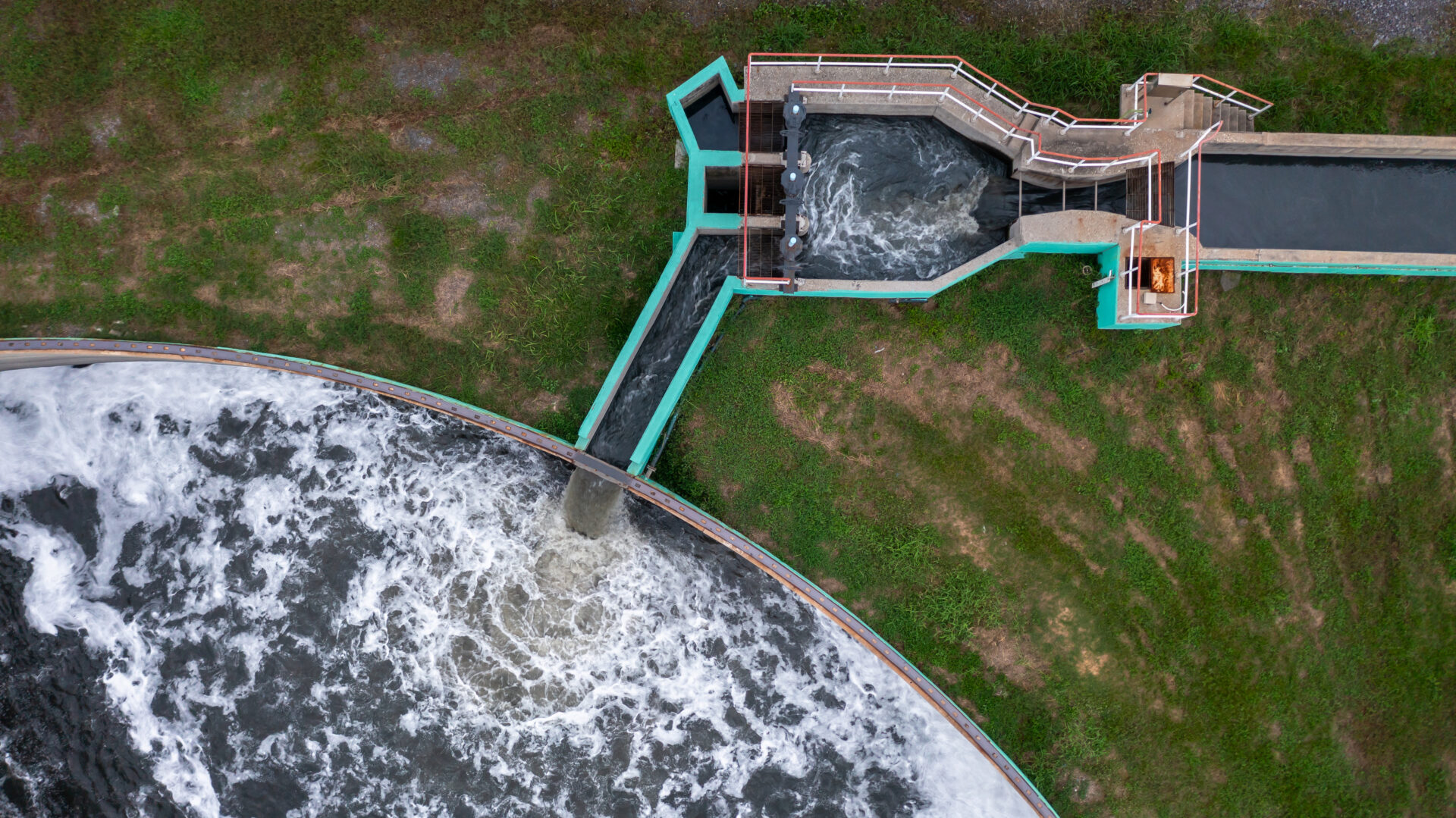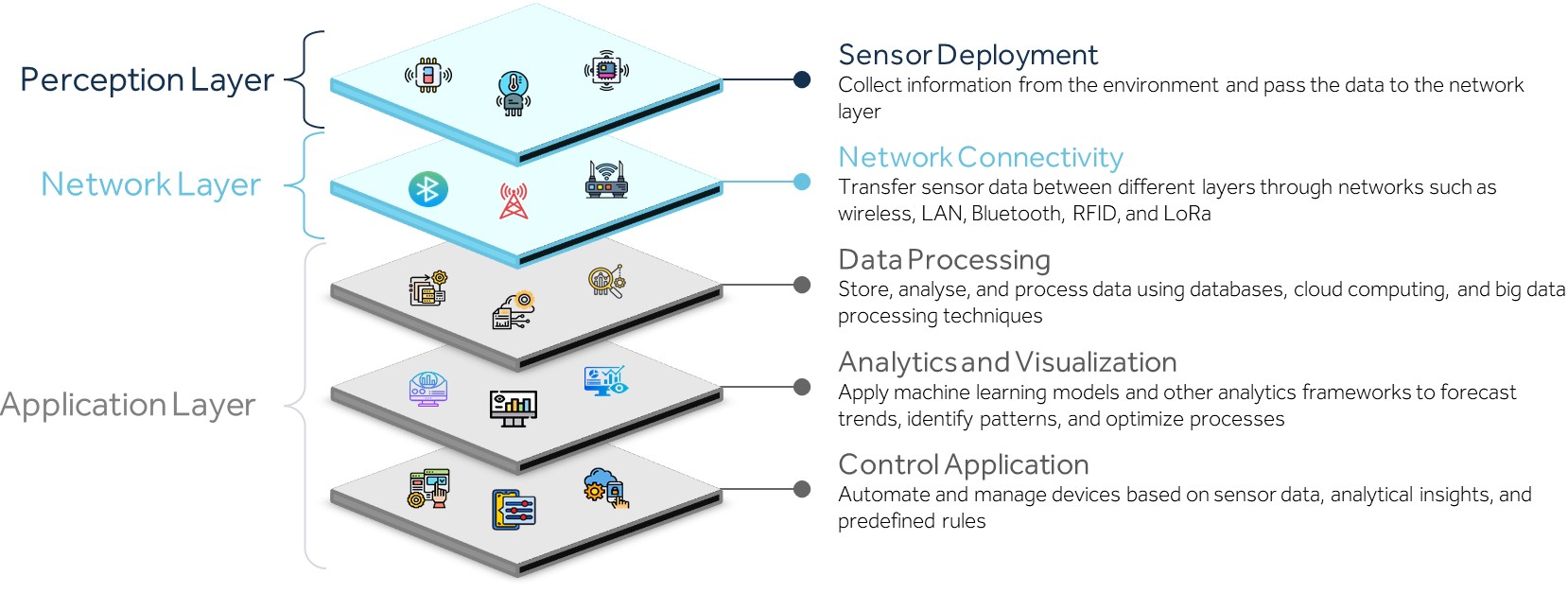
Introduction
The very element that supports life, water, is now at the epicenter of a looming global crisis. About half of the global population experiences severe water scarcity for at least one month each year. Meanwhile, global water demand is projected to increase by 20 to 50% by 2050. Together, these statistics indicate a supply and demand imbalance, where finite water resources can no longer keep pace with growing needs.
The path to solving this imbalance lies in rethinking how water is managed. This calls for a decision between two options: continue relying on conventional water management systems or welcome the potential of smart water management to secure a sustainable future.
The Case for Moving Beyond Conventional Water Management
Water scarcity isn’t just an environmental issue; it’s a serious economic problem too. Every year, around 55 million people feel the direct impact of droughts, showing just how big this issue is. By 2050, water shortages could slash GDP by up to 6% in areas that depend heavily on water for agriculture and energy production.
Given these challenges, sticking to conventional water management that depend on aging infrastructure and manual processes, will only make things worse, adding to the existing problems instead of solving them. The fact that ~30% of drinking water is lost before even reaching consumers due to leaks and inefficiencies is just one of the many consequences these systems face. The problem arises from the reactive nature of these systems, causing delayed responses to critical issues.
Addressing these shortcomings requires solutions that go beyond short-term fixes and prepare for future demands. This is where smart water management comes into play. These systems serve the dual purposes of reducing water loss and building a water infrastructure that is more sustainable and resilient for our future generations.
Understanding the Concept of Smart Water Management
Smart water management functions via interconnected networks that are powered by IoT sensors, data analytics, AI, and automation technologies. These technologies enhance monitoring, management, and conservation of water by providing real-time insights, optimizing water usage, enabling early leak detection, and improving the efficiency of water distribution systems.
This well-rounded approach makes it easier to manage everything, starting from treating wastewater to distributing water efficiently. The foundation of this approach lies in a carefully designed technical architecture, where IoT devices, communication networks, and analytics platforms work together to provide seamless and efficient water management.
Decoding the Smart Water Management Architecture
The concept of “smart” in water management is based on three layers: the Perception Layer, the Network Layer, and the Application Layer.
 With the integration of advanced technologies across these layers, water management is shifting from reactive to predictive. Sensors continuously monitor critical parameters such as flow, pressure, and quality, identifying potential issues before they escalate into major problems.
With the integration of advanced technologies across these layers, water management is shifting from reactive to predictive. Sensors continuously monitor critical parameters such as flow, pressure, and quality, identifying potential issues before they escalate into major problems.
Data analytics and AI models analyze this information to foresee demand, anticipate equipment failures, and locate leaks early. This transformation allows water systems to pre-empt disruptions and allocate resources more efficiently, ensuring that challenges are addressed before they impact supply.
With further advancements, automation is becoming an integral aspect of water management. Systems can now automatically regulate pressure based on demand fluctuations, adjust chemical dosing for water treatment with precision, and even reroute water supply in emergencies, all with minimal manual intervention. This shift towards automation improves accuracy and reliability but as well as limits functional shortcomings, paving the way for a future where water systems can operate independently.
Turning Theory into Practice: Evaluating the Practical Impact of Smart Water Management
As water systems become more predictive, the next step is integrating these advancements where they matter most. Water use is dominated by three key areas of consumption – agriculture, municipalities, and industry, each with unique challenges that require more intelligent, data-driven solutions.
Agriculture uses 72% of the world’s water withdrawals, followed by municipalities at 16% (for households and services) and industry at 12%. Optimizing water use in these areas through smart management is essential to addressing inefficiencies, reducing waste, and ensuring long-term sustainability:
1. Agriculture
Agriculture consumes the majority of global water resources, this means, that even the smallest efficiency gains can translate into significant conservation. Traditional irrigation methods generally result in excessive water use, but smart irrigation systems have showcased their ability to reverse this trend. According to the Journal of the Saudi Society of Agricultural Sciences, researchers found that implementing these irrigation systems decreases water use by 70%.
Barcelona provides a real-world example of smart irrigation in action. The city’s Poblenou Park Centre adopted a remote-controlled irrigation system that uses IoT-enabled soil moisture sensors and cloud-based analytics to regulate water distribution based on real-time conditions. This initiative led to a 25% increase in water conservation and a 15% reduction in water bills, saving USD 555K annually.
2. Municipalities
While smart water management in agriculture focuses on how to maximize efficiency in irrigation, municipalities have a different problem, they need to make sure everyone gets water reliably, even as more people move in. With over half of the world’s population already living in cities and that number expected to hit 68% by 2050, urban water systems have to keep up with the growing demand.
The Smart P.U.B. initiative adopted by Singapore provides a benchmark for how cities can follow a similar approach for modernizing their water systems. Managing an extensive network of 5,500 km of pipelines, 8,000 km of drains and canals, and multiple treatment plants, P.U.B. has installed more than 600 IoT sensors that monitor water flow, levels, and pressure. These sensors, along with AI-powered analytics help detect leaks early and optimize water supply in real time. These improvements have resulted in 5% water savings and near-zero pipe bursts, reducing unnecessary water loss while ensuring a stable supply.
3. Industry
Industries may account for a smaller share of global water use, but their processes, such as cooling, cleaning, and production, demand large volumes of water. Without proper management, this can lead to excessive consumption and waste. By adopting smart water solutions, industries can track usage, detect inefficiencies, and optimize processes to reduce water dependency while lowering costs.
For example, Schneider Electric’s Hyderabad facility was able to reduce water consumption by 57% in 2024 by implementing smart water management. IoT devices connected to cloud-based systems helped the factory observe and enhance real-time water usage through their system. The organization utilized IoT devices to manage their compressors and deployed data-based energy management systems with closed-loop controllers for chillers. This initiative also led to a 59% reduction in energy use, a 64% improvement in waste optimization, and a 61% decrease in CO2 emissions.
The examples provided, spanning agriculture, municipal systems, and industrial applications, are merely stepping stones toward a future, where water management is not just reactive but fully automated and predictive. The next chapter of smart water management will involve deeper integration of these technologies, enabling dynamic, real-time adjustments that address challenges before they arise.
The Road Ahead for Water Management
As the practical benefits of smart water management become clearer, technologies like digital twins, AR, VR , and robotics will be reshaping the way we manage water, not just as tools for fixing problems, but as game changers in how we understand, monitor, and optimize water systems at every level.
Digital twins create real-time, interactive models of water networks, helping predict and prevent issues before they even happen, saving both resources and effort. AR and VR are providing workers with a new means of interaction with these systems, simplifying difficult diagnostics and making training, an immersive, interactive process without real-world risks. At the same time, robotics is stepping in to perform routine inspections with high precision, identifying problems at early stages and minimizing the amount of manual intervention.
This isn’t a future we’re waiting for; it’s a reality that’s unfolding right now. Water management will continue to evolve into a web of interconnected systems that work autonomously, collaborate intelligently, and ensure sustainability.
References:
- World Bank (2024)
- World Economic Forum (2024)
- Schneider Electric (2024)
- Journal of Saudi Society of Agricultural Sciences (2024)
- Dubai Electricity and Water Authority (2024)
- World Economic Forum (2023)
- World Resources Institute (2020)
- PUB, Singapore (2020)
- Geographical Association (2019)
- US Geological Survey (2019)
- McKinsey Global Institute (2018)
- Xylem (2018)
- US Department of Energy (2013)
- PUB, Singapore (n.d.)
- World Health Organization (n.d.)




